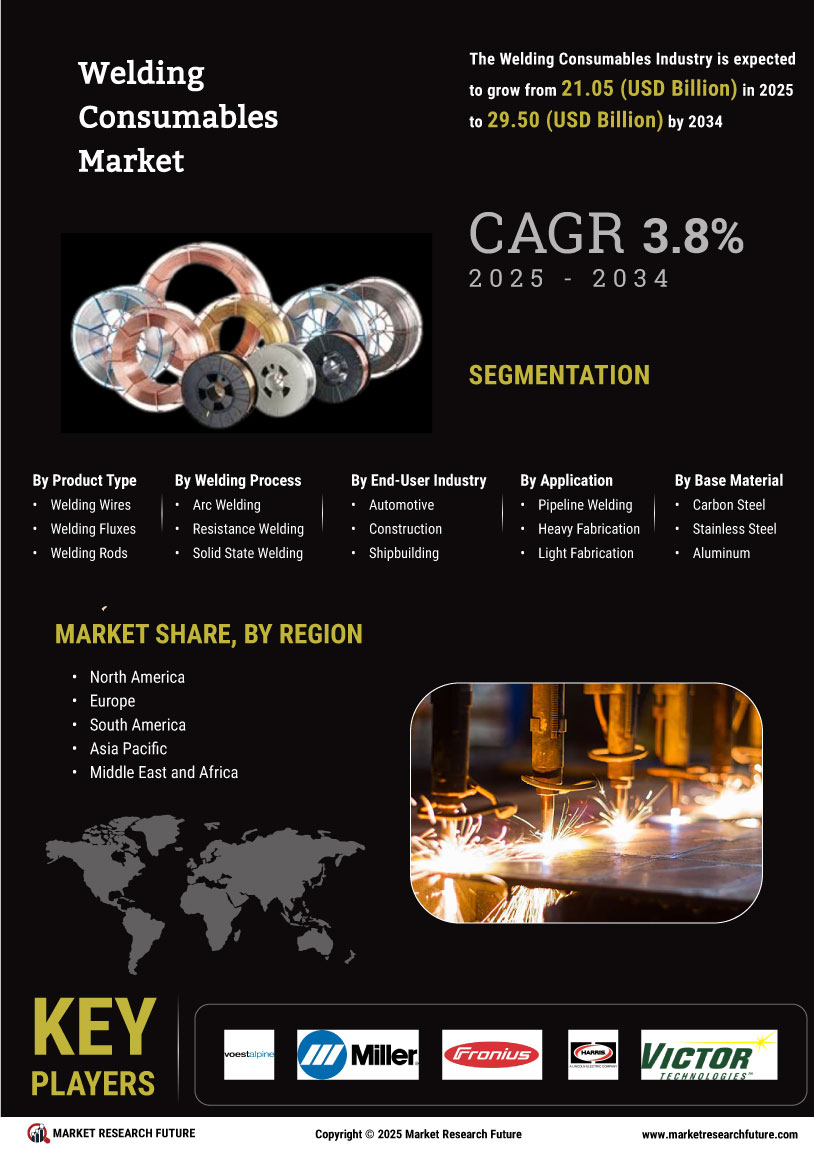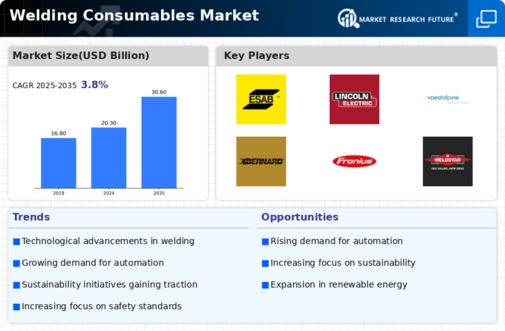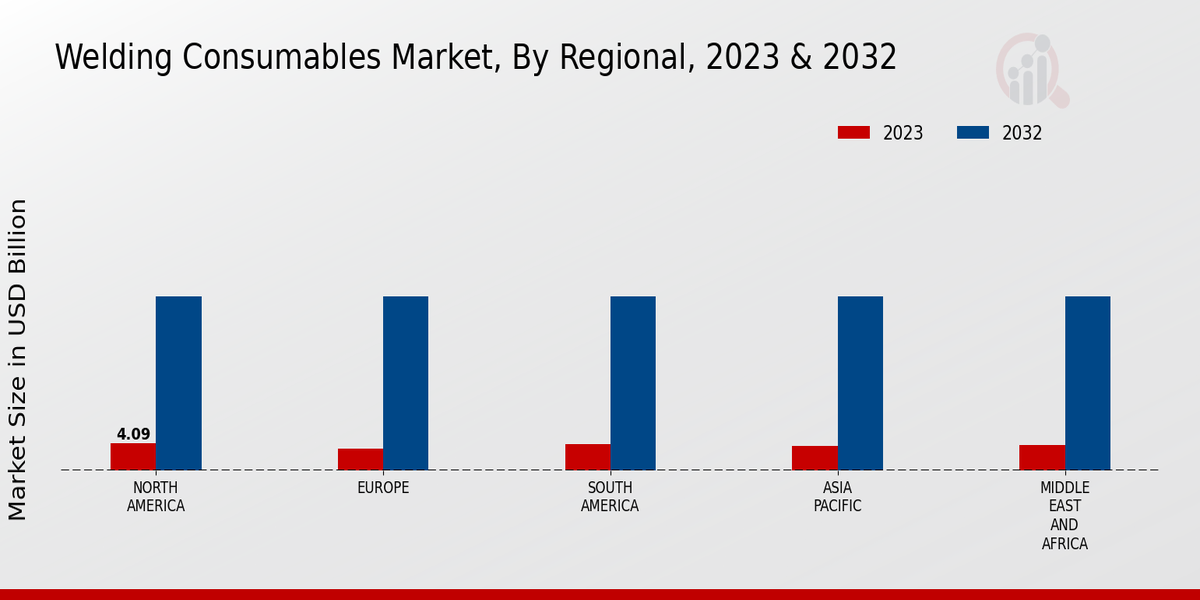Market Growth Projections
The Global Welding Consumables Market Industry is projected to experience steady growth, with estimates indicating a market size of 30.6 USD Billion by 2035. This growth is expected to be driven by a compound annual growth rate (CAGR) of 3.82% from 2025 to 2035. The increasing adoption of welding technologies across various sectors, including construction, automotive, and manufacturing, is likely to contribute to this upward trend. As industries continue to evolve and innovate, the demand for welding consumables that meet diverse application needs will play a crucial role in shaping the market's future.
Growing Demand in Automotive Sector
The automotive sector is a primary driver of the Global Welding Consumables Market Industry, as manufacturers increasingly rely on advanced welding techniques for vehicle assembly. With the automotive industry projected to reach a valuation of 20.3 USD Billion in 2024, the demand for high-quality welding consumables is expected to rise significantly. This growth is attributed to the increasing production of electric vehicles, which require specialized welding processes. As automakers prioritize efficiency and safety, the adoption of innovative welding consumables becomes essential, thereby bolstering the market's expansion.
Infrastructure Development Initiatives
Infrastructure development initiatives worldwide are fueling the Global Welding Consumables Market Industry. Governments are investing heavily in infrastructure projects, including bridges, roads, and buildings, which necessitate robust welding solutions. For instance, the global infrastructure spending is anticipated to increase, leading to a heightened demand for welding consumables. This trend is particularly evident in emerging economies, where urbanization drives construction activities. As infrastructure projects ramp up, the need for reliable welding consumables to ensure structural integrity becomes paramount, thereby contributing to market growth.
Rising Demand for Lightweight Materials
The rising demand for lightweight materials in various industries is significantly impacting the Global Welding Consumables Market Industry. Industries such as aerospace and automotive are increasingly utilizing materials like aluminum and composites, which require specific welding techniques and consumables. This shift towards lightweight materials is driven by the need for improved fuel efficiency and performance. As manufacturers adapt to these changes, the demand for welding consumables tailored for lightweight materials is expected to grow. This trend underscores the evolving nature of the market and the necessity for innovative solutions.
Environmental Regulations and Sustainability
Environmental regulations and sustainability initiatives are shaping the Global Welding Consumables Market Industry. As industries face increasing pressure to reduce their carbon footprint, there is a growing emphasis on eco-friendly welding consumables. Manufacturers are exploring alternatives that minimize environmental impact while maintaining performance standards. This shift is evident in the development of low-emission welding processes and consumables that align with sustainability goals. As regulatory frameworks become more stringent, the demand for environmentally compliant welding consumables is likely to increase, influencing market dynamics.
Technological Advancements in Welding Processes
Technological advancements in welding processes are transforming the Global Welding Consumables Market Industry. Innovations such as laser welding and automated welding systems enhance efficiency and precision, leading to increased adoption of advanced welding consumables. These technologies not only improve productivity but also reduce operational costs for manufacturers. As industries seek to optimize their welding operations, the demand for specialized consumables that complement these technologies is likely to rise. This trend indicates a shift towards more sophisticated welding solutions, driving the market's growth trajectory.



 Source: Primary Research, Secondary Research, MRFR Database and Analyst Review
Source: Primary Research, Secondary Research, MRFR Database and Analyst Review
















